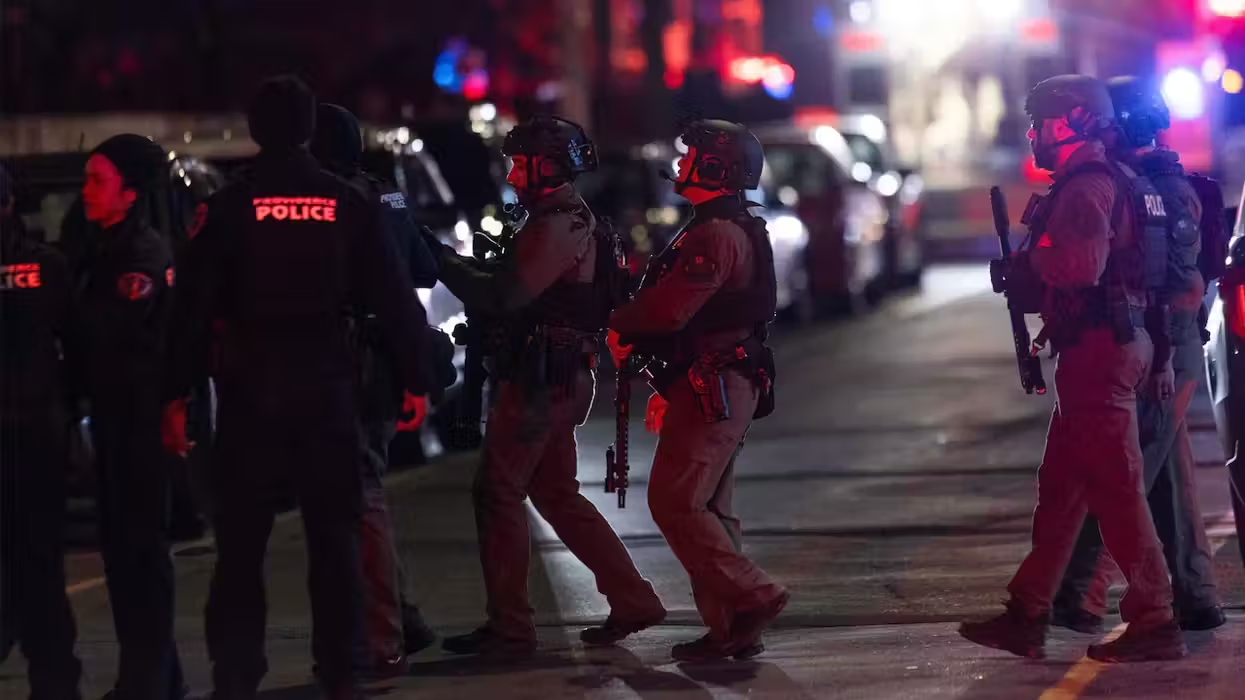
© 2025 Blaze Media LLC. All rights reserved.
How our government stopped the 1989 asylum surge BEFORE it got out of control
April 02, 2019
In 1984, the WSJ published an op-ed, “In Praise of Huddled Masses.” "We propose a five-word constitutional amendment: There shall be open borders.” Well, 35 years later, that is exactly what we have. Our government is now telling us that the laws, which actually say the opposite, compel them to let anyone in. We didn’t even need a constitutional amendment to create open borders. We just needed judges.
As we allow nearly everyone into our country and release them into our communities, the “mother of all caravans” is forming in Honduras, according to media in Mexico. Was there ever a time in history when we allowed this to go on? Remember, our current laws have been in place since 1952, and the updated asylum statutes have been in place since 1980. We’ve been through this before, only then, as I demonstrated with the case of the Haitian boat people in 1993, our government shut it down immediately. But there is another case we should study that is even a better apples-to-apples comparison to what is going on today, and that is the way we shut down the asylum surge of Nicaraguans in south Texas in 1989.
Following the coup of Sandinista Marxists against the Somoza dynasty in 1979, a number of people fled the country and requested asylum at our border. In total, 126,000 applied for asylum, but that was spread out over the period 1981-1990. However, unlike with those coming now from the Northern Triangle countries (and increasingly from Nicaragua), many of these individuals were legitimate asylees, and some were actually wealthy individuals tied to the ruling family or the Contras, whom the U.S. was supporting against the Sandinistas. In fact, this was a part of the strategy of the Reagan administration to combat communism. So, we definitely had a vested interest, unlike today, in bringing some of these people in.
But towards the end of the 1980s, the migration became a flow of impoverished individuals simply fleeing economic conditions in Nicaragua. In 1988, Hurricane Joan left 432 people dead and 230,000 homeless. It was certainly a sad situation, as we see today with the devastation of hurricanes in the Caribbean, but it clearly has nothing to do with asylum. According to the Congressional Research Service, between June 1988 and March 1989, the totality of this iteration of Nicaraguan migration, 18,000 Nicaraguans crossed the border at Brownsville, Texas, most of them declaring asylum. That was regarded as an emergency situation at the time.
Now, think about that for a moment. The entire crisis was over 18,000 individuals coming in over nine months. We’ve had hundreds of thousands of Central American families and teens come in over the past nine months, and the trajectory has just accelerated to unprecedented levels with no end in sight.
What did the Bush 41 administration do when the Nicaraguan crisis was about one-twentieth the size of today’s crisis? Beginning in March 1989, the Bush administration detained all of the asylum-seekers in tent cities in south Texas, similar to the procedure used in Florida during the first wave of Haitian boat people in 1981. Bush’s Immigration and Naturalization Services (INS) began immediately rejecting the unqualified claims during initial screenings. As I have suggested the administration do today, they sent all their adjudicators to the tent cities, denied the claims, and immediately sent unqualified claimants back, which is what is actually required by law.
''We intend to send a strong signal to those people who have the mistaken idea that by merely filing a frivolous asylum claim, they may stay in the United States,'' said Alan C. Nelson, then commissioner of the INS. He added, ''This willful manipulation of America's generosity must and will stop.''
And indeed, the message reverberated loud and clear to the next group of potential migrants. According to an April 10 archived article of the Miami Herald, “U.S. Border Patrol statistics compiled in McAllen, Texas, showed that 603 non-Mexican aliens were arrested between Brownsville and Laredo in the first 10 days of April, down from 1,899 for the same period in March.”
So, was the signal sent to the next wave of bogus asylum seekers?
According to the Herald, “The Border Patrol estimates that the Nicaraguans who left home before Feb. 20 had all passed through the immigrant pipeline by March 12. For the month since then, arrests of non-Mexicans each week have declined steadily, from 711 to 438. … The number of asylum applicants has dwindled spectacularly. Since Feb. 20, the figure has dropped to 10 per week, down from December, when 2,000 people per week presented themselves at south Texas centers to ask for asylum, INS says.”
That flow was slowed to a trickle after just a few months and 18,000 asylum requests, even though there were more legitimate requests among them than today’s. In fact, according to the New York Times, “Initially, as many as 87 percent of asylum claims by Nicaraguans were approved.” Now there have been hundreds of thousands of Central American families all coming in for economic reasons. There have been no coups in their home countries or any political dynamic that would create legitimate asylees. Violence has actually been down in all three Central American countries.
The obvious question is how many more illegal immigrants need to scam this system for our government to react? Texas cities are now being overrun by the cost of this humanitarian and security crisis, something that was not allowed to happen in 1989.
It’s important to remember that nothing has changed since 1989. Our immigration system is operating under the same laws passed in 1952 and 1980. If anything, we toughened up asylum law, among other parts of the INA, in 1996. What was good then is good now. And as far as the Flores settlement is concerned, the 1997 agreement that supposedly binds our government to release at least the children within 20 days, Judge Andrew Hanen in Texas believes it no longer applied as of 2013.
Moreover, this administration can promulgate a new regulation and vitiate the Flores agreement. On September 7, 2018, the administration moved to promulgate a new regulation on detaining minors, and the 45-day period for public comment has long passed. It’s unclear why the administration has not moved to implement the changed policy.
Finally, even if still abiding by the Flores 20-day limit, DHS should be able to adjudicate the cases in less than 20 days if it implements the emergency plan to construct tent cities.
Either way, the administration is going to have to assert precedent, statute, case law, and separation of powers to stand up to the lower court resistance, because no other era of our government would have allowed this to continue for nearly this long.
What we need now even more than a wall is a will — a will to enforce the laws we already have.
#mc_embed_signup{background:#fff; clear:left; font:14px;}
/* Add your own MailChimp form style overrides in your site stylesheet or in this style block.
We recommend moving this block and the preceding CSS link to the HEAD of your HTML file. */
Want to leave a tip?
We answer to you. Help keep our content free of advertisers and big tech censorship by leaving a tip today.
Want to join the conversation?
Already a subscriber?
Blaze Podcast Host
Daniel Horowitz is the host of “Conservative Review with Daniel Horowitz” and a senior editor for Blaze News.
RMConservative
Daniel Horowitz
Blaze Podcast Host
Daniel Horowitz is the host of “Conservative Review with Daniel Horowitz” and a senior editor for Blaze News.
@RMConservative →more stories
Sign up for the Blaze newsletter
By signing up, you agree to our Privacy Policy and Terms of Use, and agree to receive content that may sometimes include advertisements. You may opt out at any time.
Related Content
© 2025 Blaze Media LLC. All rights reserved.
Get the stories that matter most delivered directly to your inbox.
By signing up, you agree to our Privacy Policy and Terms of Use, and agree to receive content that may sometimes include advertisements. You may opt out at any time.






